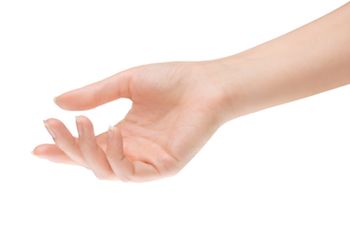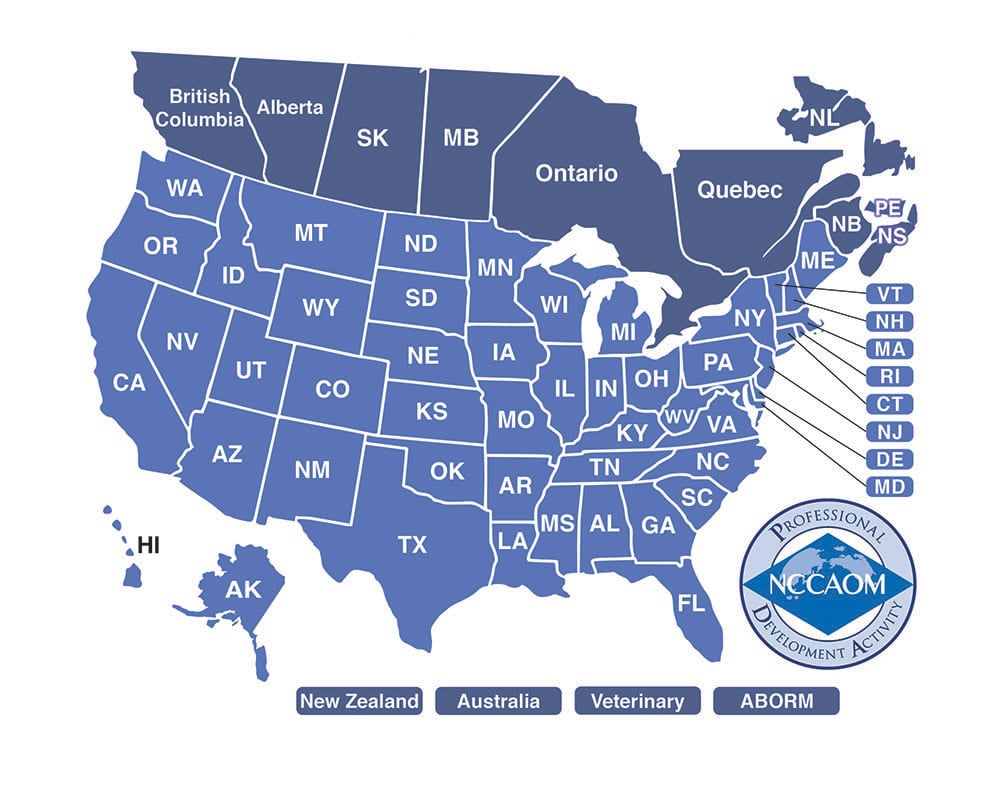Wrist Pain Course Sample
Acupuncture CEU & PDA Credit Online

Take a look inside the course material:
Treatment of Wrist Pain:
Carpal Tunnel Syndrome, Cubital Tunnel, and Guyon’s Canal
Introduction
In this course, we will examine treatment of wrist pain with TCM. In particular, we will address some common causes of wrist pain: median nerve compression and ulnar nerve entrapment at the cubital tunnel and Guyon’s canal. Of the three disorders, median nerve compression (carpal tunnel syndrome) is more widely known. However, ulnar nerve compression is also a major cause of wrist pain. Therefore, TCM practitioners should understand how wrist pain arises from both median and ulnar nerve injury.
By the end of this course, you will know how to:
• Identify various causes of wrist pain
• Develop treatment of plans using both acupuncture and herbs.
Pathophysiology/Mechanism
The Brachial Plexus—The brachial plexus is the network of spinal nerves supplying innervation for the shoulder, arms and upper extremities. Damage to specific portions of the brachial plexus can result in dysfunction of the foreman, hand, and fingers and cause such disorders as wrist drop and clawhand. The brachial plexus has three major trunks, which further divide into anterior and posterior divisions. These two divisions branch into 16 nerves extending from C5 to T1.
The three nerves which are the focus for our discussion include the median, radial, and ulnar nerves. These nerves directly affect the wrist and fingers.
The radial nerve originates from brachial roots leaving C5 – T1. Injury to the radial nerve can result in in wrist drop, or inability to extend the wrist. The radial nerve emanates from the posterior division of brachial plexus. Its distribution includes the:
• Extensor muscles of the arm and forearm including the triceps brachii
• Skin covering the posterior arm and forearm
• Lateral two-thirds of the dorsal surface of the hand
• Proximal and middle phalanges
The median nerve originates from brachial roots leaving C5 – T1 just like the radial nerve. However, the median nerve emanates from the anterior division of the brachial plexus. The median nerve’s distribution includes the:
• Flexors of the forearm (except for the flexor carpi ulnaris)
• Some flexors of the palm
• Skin of the lateral two-thirds of the palm and fingers
The median nerve runs through the anatomical structure called the carpal tunnel. Compression of the nerve through this structure results in pain, weakness, numbness, tingling in the palm, wrist, and fingers, or what we commonly refer to as carpal tunnel syndrome (CTS).
The ulnar nerve originates from brachial roots leaving C8 – T1. Injury to the ulnar nerve causes clawhand and sensory loss over the fifth (little) finger. Like the median nerve, the ulnar nerve also emanates from the anterior division of the brachial plexus. The ulnar nerve’s distribution includes:
• most of the muscles of the hand, flexor carpi ulnaris
• flexor digitorium profundus
• skin on the medial side of the hand
• medial half of the ring finger
• skin of the fifth finger.
Median nerve compression (Carpal Tunnel Syndrome).
The carpal tunnel is a rigid, “closed compartment.” The carpal tunnel is formed by the transverse median ligament. Compression of the median nerve at the wrist by this ligament results in carpal tunnel syndrome, which can be either of acute or chronic etiology. Common signs of median nerve compression are pain, paresthesias, numbing, and tingling in the palmar aspect of the thumb, second and third (index and middle fingers), and radial half of the fourth finger.
Often, median nerve compression is a cumulative traumatic injury. Sudden trauma, wrist fracture, crushing injuries, and burns can all lead to acute carpal tunnel. Chronic carpal tunnel can be caused by constriction from casts, handcuffs, tight gloves, repetitive and forceful gripping as well as anatomical anomalies, tenosynovium and scarring.
A topic of controversy is whether occupational use of vibratory tools or intense, repetitive gripping leads to carpal tunnel. Some experts tend to believe these actions are not responsible for carpal tunnel syndrome. While other researchers assert that repetitive motions do indeed cause compression and injury resulting in CTS.
There are three common stages of compression in CTS:
• Stage 1 (early compression) – Involves impaired blood flow. The patient may report intermittent symptoms. No structural changes are apparent.
• Stage 2 (moderate compression) – Involves impaired blood flow, edema, thenar weakness, and abnormal sensation. There may also be intraneural fibrosis.
• Stage 3 (severe compression) – Involves chronic edema, fibrosis, loss of muscle fibers, persistent sensory changes, thenar atrophy.
More in actual course material....
Sample from the theory section
TCM Treatment of Wrist Pain
While more documented studies and randomized clinical trials are needed, several recent studies and clinical trials point to acupuncture as an effective treatment of wrist pain/carpal tunnel pain. Iranian researchers published an abstract in the January 2012 issue of the Journal of Research in Medical Sciences stating: “Our findings indicated acupuncture can improve overall subjective symptoms of carpal tunnel syndrome.” A 2009 Taiwan study showed acupuncture provided relief comparable to oral steroids for mild to moderate carpal tunnel. In another study conducted in 2006, researchers concluded that acupuncture exerts a therapeutic effect by a “coordinated limbic network including the hypothalamus and amygdale.”
TCM Mechanism —
From the TCM perspective, wrist pain, or more commonly carpal tunnel syndrome, is attributed to several patterns with some form of painful obstructive syndrome the prevailing factor in many cases. Painful obstructive syndrome, or bi syndrome, is due to wind, cold, dampness or heat, which subsequently obstruct blood and qi flow. Wrist pain may also be caused by direct trauma or chronic injury resulting in qi stagnation and blood stasis. Basic patterns for wrist pain may include:
• Qi and blood stasis due to direct trauma (die da) or chronic overuse.
• Damp-heat bi: This pattern is easy to identify because there will be swelling and redness.
• Cold (wind-cold-damp) bi: This may be a major factor for some patients--especially those who work outdoors, in cold offices, or chilly warehouses/freezers.
• Wind (wind-damp) bi: This pattern involves pain that seems to move. For example, one day the inside (palmar side) of the wrist hurts. Then, the next day, the top (dorsal side) of the wrist hurts.
Bi syndrome can further be divided into acute episodes and chronic episodes. In the case of chronic injury or bi syndrome, the persistent obstruction of qi and blood may also lead to atrophy, or muscle wasting. Atrophy may occur in the tissues of the thenar eminence. As a result, the patient may have limited strength in both the thumb and wrist of the affected hand. In the case of carpal tunnel, however, soft tissue swelling is more common than muscle atrophy.
More in actual course material....
Sample from the acupuncture section
Acupuncture
The following are some potential patterns you may see in patients. While sometimes we tend to associate swelling with inflammation (heat), note that with CTS cases cold and/or dampness are major causes of the pain and swelling. Treat according to whether the condition is acute or chronic.
1. Qi and Blood Stasis – Move qi and blood
• GB 34 – Unblocks channel, promotes smooth qi flow, benefits tendons
• SP 10 – Moves qi, invigorates blood
• LI 10 – Unblocks channel, major point for treating musculoskeletal issue in the forearm or hand
+ Local Points
• SI 4 – Unblocks channel, treats wrist pain and limited range of motion in the fingers
• HT 5 – Relieves pain in the wrist and elbow
• SJ 4 – Relaxes tendons, unblocks the channels, relieves carpal tunnel pain
• LU 8 – Relieves pain in the wrists
• LI 3 – Swelling of fingers and dorsum of the hands
• LI 4 – Unblocks the channel, releases exterior relieves pain (major pain point)
• LI 5 – Relieves painful obstruction in the wrist
• Baxie (fingers) – Relieves pain and swelling in the hand, clears heat
2. Cold (wind-cold-damp) bi – Warm channels, expel cold, eliminate wind. Note: Use moxabustion with acupuncture to treat this pattern.
• ST 36 – Expels wind and damp, relieves pain, raises yang
• LI 10 – Unblocks channel, major point for treating musculoskeletal issues in the forearm or hand
+ Local Points
• SI 3 – Eliminates both wind-cold and wind-heat
• HT 5 – Relieves pain in the wrist and elbow
• SJ 4 – Relaxes tendons, unblocks the channels, relieves carpal tunnel pain
• LU 8 – Relieves pain in the wrists
• LI 3 – Swelling of fingers and dorsum of the hands
• LI 4 – Unblocks the channel, releases exterior relieves pain (major pain point)
• LI 5 – Relieves painful obstruction in the wrist
• Baxie (fingers) – Relieves pain and swelling in the hand
More in actual course material....


